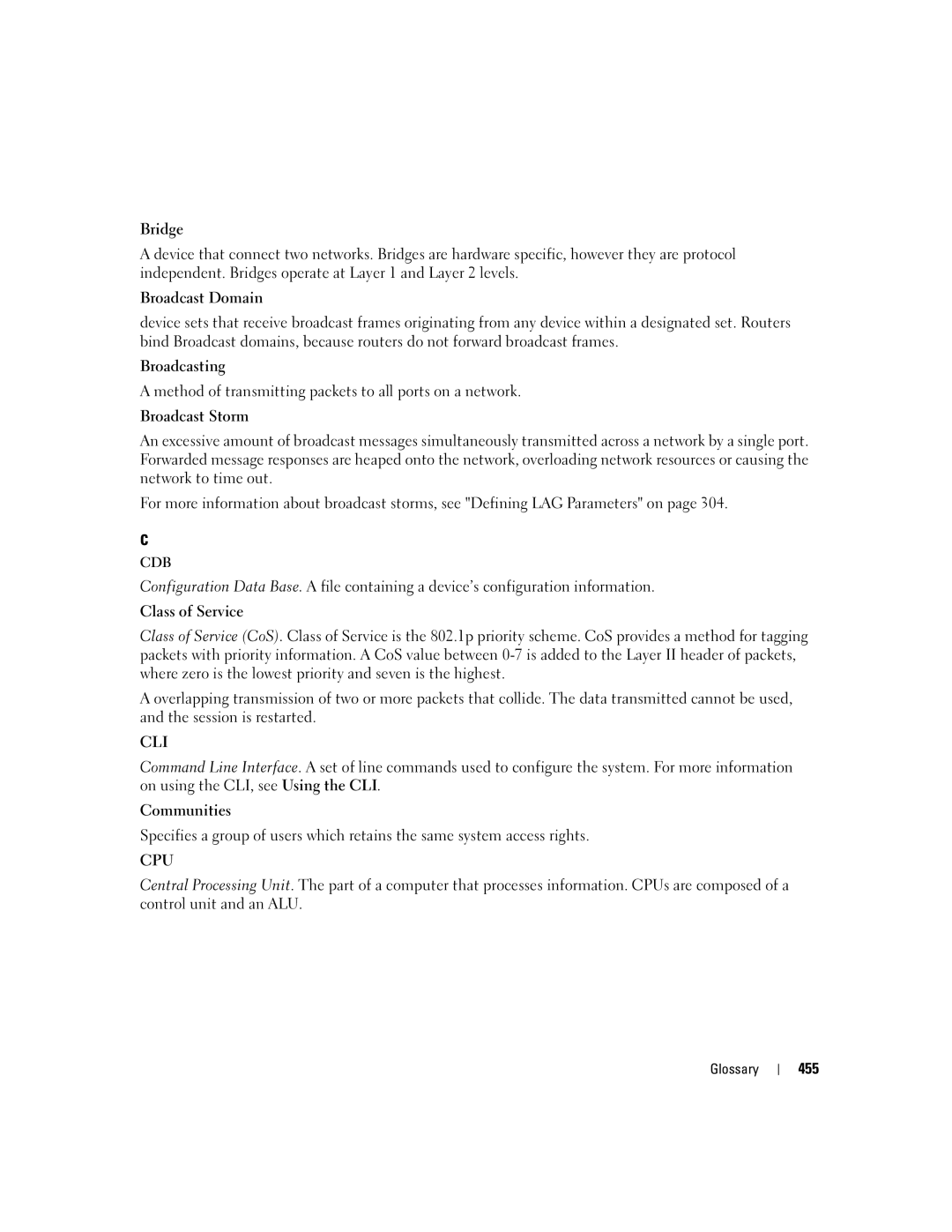Bridge
A device that connect two networks. Bridges are hardware specific, however they are protocol independent. Bridges operate at Layer 1 and Layer 2 levels.
Broadcast Domain
device sets that receive broadcast frames originating from any device within a designated set. Routers bind Broadcast domains, because routers do not forward broadcast frames.
Broadcasting
A method of transmitting packets to all ports on a network.
Broadcast Storm
An excessive amount of broadcast messages simultaneously transmitted across a network by a single port. Forwarded message responses are heaped onto the network, overloading network resources or causing the network to time out.
For more information about broadcast storms, see "Defining LAG Parameters" on page 304.
C
CDB
Configuration Data Base. A file containing a device’s configuration information.
Class of Service
Class of Service (CoS). Class of Service is the 802.1p priority scheme. CoS provides a method for tagging packets with priority information. A CoS value between
A overlapping transmission of two or more packets that collide. The data transmitted cannot be used, and the session is restarted.
CLI
Command Line Interface. A set of line commands used to configure the system. For more information on using the CLI, see Using the CLI.
Communities
Specifies a group of users which retains the same system access rights.
CPU
Central Processing Unit. The part of a computer that processes information. CPUs are composed of a control unit and an ALU.
Glossary
455
